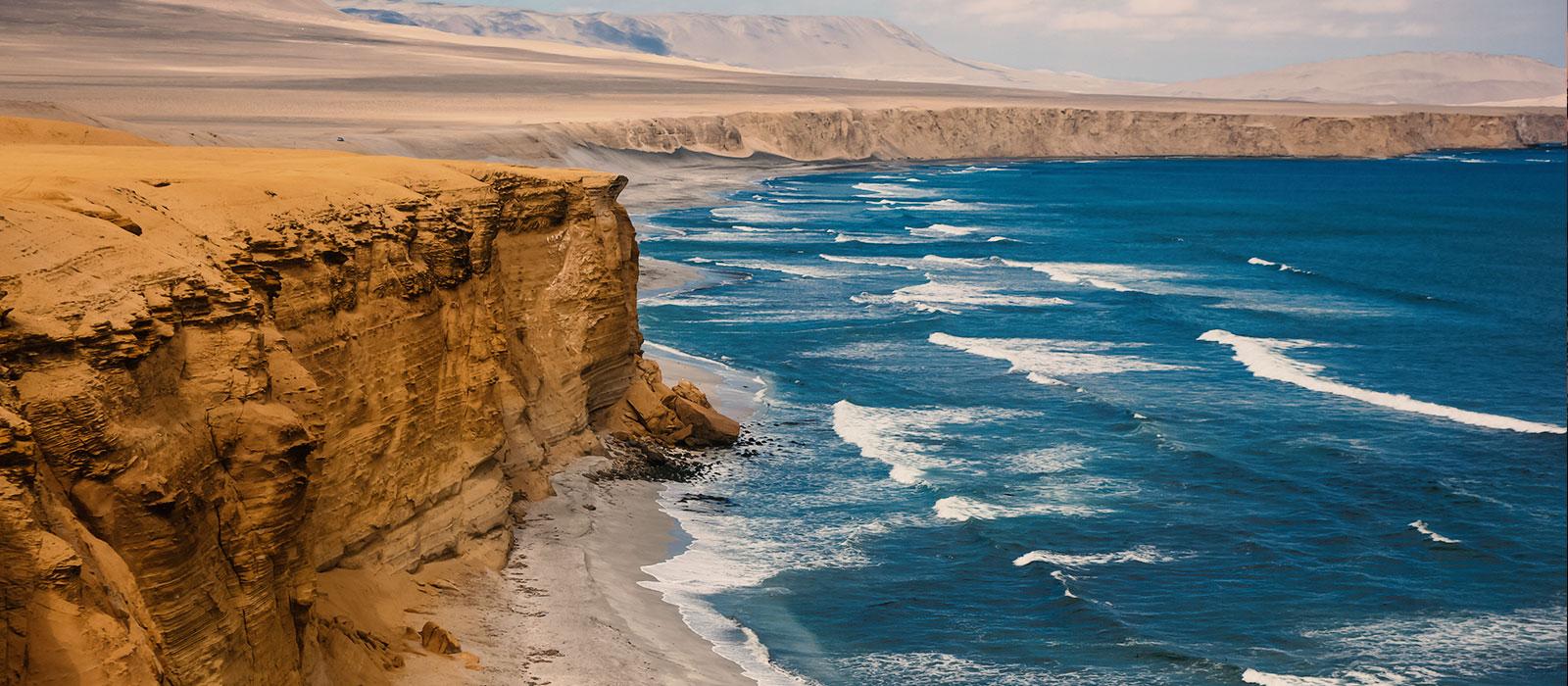
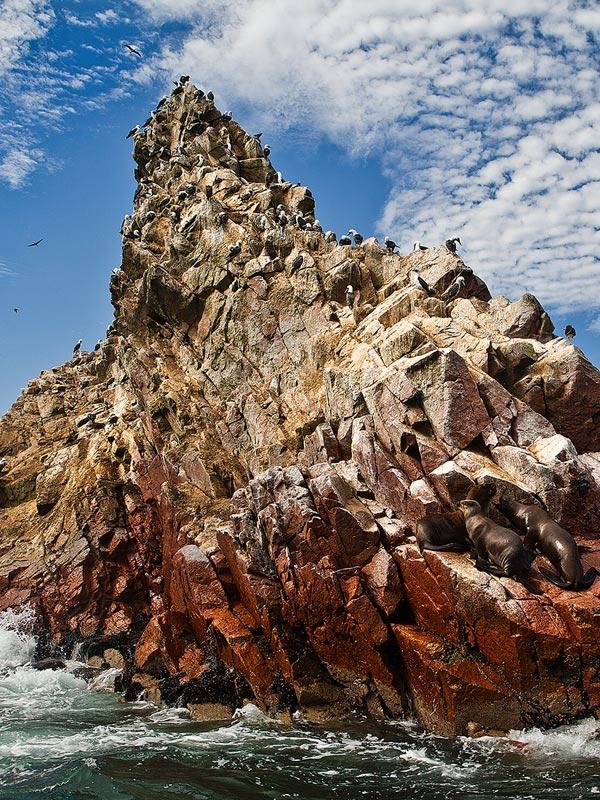
A mere four hours south of Lima lies the coastal town of Paracas. Travelers flock here year-round to visit the nearby Ballestas Islands. Often referred to as the “poor man’s Galapagos”, the islands are home to sea lions, Peruvian boobies, and even penguins. Paracas is also famous for its expansive National Reserve, which was declared a UNESCO protected area in 1975. This marine reserve juts out into the bay, forming the Paracas peninsula. Tours to explore its unique ecosystem leave daily by car, bike or ATV, depending on your preference. Explorers are rewarded with astounding views of rocky cliffs, pristine beaches, and fascinating geologic formations.
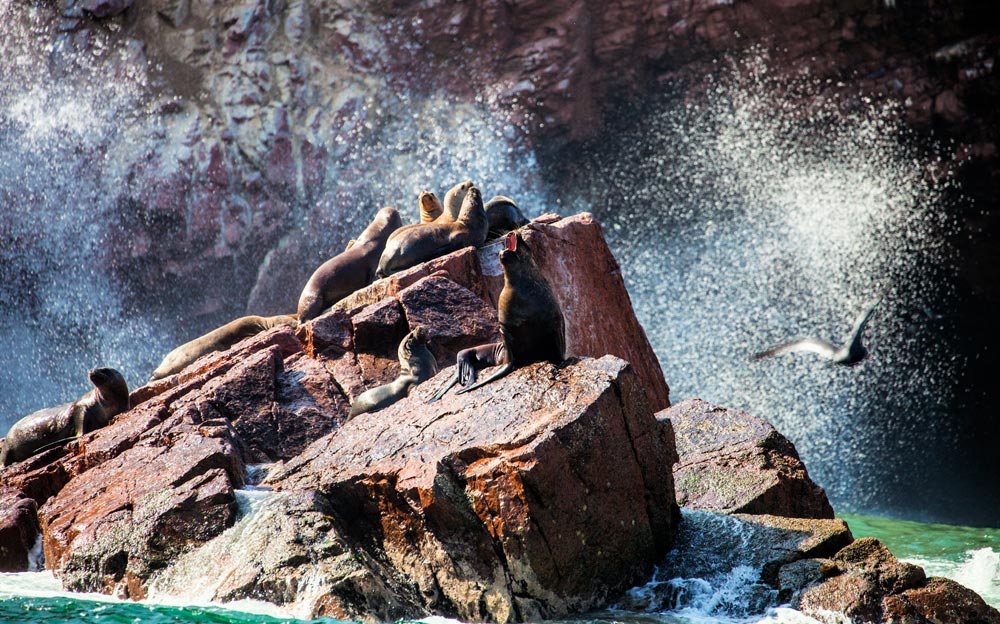
Yet more exciting activities await in the surrounding area. Pisco, the famous Peruvian spirit, originates from the province of the same name. In these lands, which have nurtured human civilizations for thousands of years, Peruvian farmers first began to set up distilleries. Take a tour to some of the most well-known pisco producers in the country for taste-testing sessions. Thrill seekers can also take their pick of a range of adventure tours available in the area. From kayaking and windsurfing, to dune buggying and sand-boarding, you will be spoiled for choice.
But Paracas is not all about action; it also boasts plenty of opportunities for rest and relaxation. Wind down by the pool at one of the town’s luxurious seaside resorts. Enjoy a delicious, fresh meal, prepared with locally sourced, seasonal seafood. Treat yourself to a relaxing massage at the spa. Or wander around the small town, known as El Chaco, to soak in the charming coastal atmosphere.
The word paracas derives from the Quechua word para-ako, meaning “raining sand”. This likely refers to the sandstorms that sometimes whip through the bleak pampa terrain that dominates the region.
Paracas and the surrounding National Reserve lie in the region of Ica, 155 miles (250 km) south of Lima. This coastal area is situated on the edges of the Atacama Desert, making it one of the driest places in the world. The entire region thus experiences little to no rainfall most of the year. The surrounding sand dunes, formed by geological folds, are a popular spot for sand-boarding and dune buggies.
The reserve spans 335,000 hectares, the majority of which sits on the Paracas Peninsula. In order to protect the many archeological sites and marine ecosystems found in the area, the reserve is a designated UNESCO World Heritage Site.

Paracas experiences differing summer and winter seasons, with transitional periods in between. True to its original Quechua name, sandstorms are common, and wind speeds average up to 37 mph (60 km/h). Despite the blustery conditions, sunshine and warm days prevail.
Thanks to the Humboldt Current, which runs from Antarctica up the Pacific coast of South America, Paracas’ ocean is bursting with life. Unlike the dry and arid mainland, this cold-water current is rich in nutrients. It thus attracts a wide range of marine wildlife, including sea lions and guano birds.
From December to March
From June to September
From April to May & October to November
Summertime (from December to March) is the best season to visit Paracas if you’re hoping for good weather. Thanks to warm temperatures and clear skies, it\'s a popular vacation spot for Peruvians.
As for wildlife spotting, this varies by season. The Ballestas Islands are renowned as a hotspot for penguins in Peru. These penguins migrate to the islands in April, and remain there until November. However, a number of other bird and aquatic species can be seen throughout the year. For example, sea lions can be glimpsed lounging on the islands’ shores all year round.

The most popular way to travel from Lima to Paracas is using the Cruz Del Sur bus company. The bus from Lima to Paracas leaves roughly every hour from the terminal on Javier Prado Avenue. Depending on traffic, the journey takes between 3-4 hours. Upon arrival in Paracas, the bus stop is located only minutes from most seaside hotels.
If you plan to visit Paracas as a day trip, it’s best to hire a private driver. This will also give you a more personalized experience. Be sure to arrange your Paracas tour from Lima beforehand. A driver will pick you up from your Lima hotel and drop you off upon return.
Driving Durations:
The Paracas culture thrived in the Paracas region between approximately 800 BCE and 100 BCE. Archaeologists knew extremely little about this culture until the 1920s. This changed when Peruvian archaeologist, Julio C. Tello, discovered the Necropolis burial site. Excavations revealed more than 400 mummies wrapped in layers of intricately-woven shrouds. Made of camelid fibers, Paracas textiles have been preserved because of the arid climate. Made with simple tools, the complex geometric designs and rich colors of these ancient Paracas textiles are astonishingly fine. Tello also found peculiar cone-shaped skulls, caused by cranial deformation, which have become renowned across the world. In contemporary culture, elongated human skulls were considered to be aesthetically pleasing and demonstrated high social status.
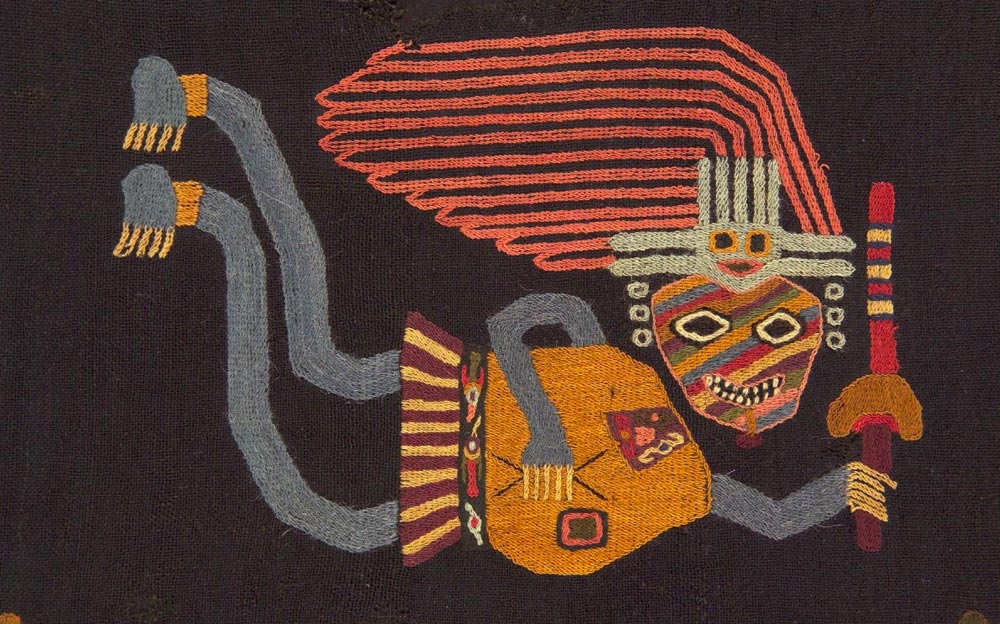
The reason behind the decline of the Paracas culture is still unknown. Despite this, aspects of their art and agricultural technology lived on in the succeeding Nazca culture.
In the mid-19th century the world discovered the fertilizing power of guano. The Ballestas and other coastal islands are caked in the manure of Peruvian boobies, Guanay cormorants, and other seabirds. The area thus became a keystone of the Peruvian economy. For many decades, guano exports to Europe were Peru’s most important source of revenue. In the present day, unsustainable guano mining has depleted much of the natural resource, but the guano trade is still valuable. Collectors now usually rotate their harvesting periods to allow the droppings to accumulate.
In 1975, the Paracas National Reserve became a UNESCO protected site to safeguard the area’s rich aquatic ecosystem and marine wildlife.
Using Paracas as your exploratory base, embark on a Flyover Tour of the Nazca Lines. Nazca Lines flights from Paracas depart from Pisco airport, which lies about 6 mi/10 km north of Paracas. The airport is used almost exclusively for Nazca Lines tours. The flight lasts approximately 90 minutes, including plenty of time to circle over the famous geoglyphs. Be sure to bring your passport with you, or you won’t be permitted to board the plane. See our Nazca guide for more information on tour options to see the Nazca Lines.
Tucked away in the sand dunes of Peru’s southern coast lies the Huacachina Oasis. This quaint resort town comprises colonial-inspired buildings and leafy palms framing an emerald lagoon. Lima residents and travelers flock to Huacachina for sunshine, dune buggying and sand-boarding. Many providers are quick to offer tourists an adventure tour for bargain rates. Before signing up, be certain that the vehicle complies with recommended safety guidelines. It is advisable to set up your Huacachina tour in advance through a trusted travel agency.
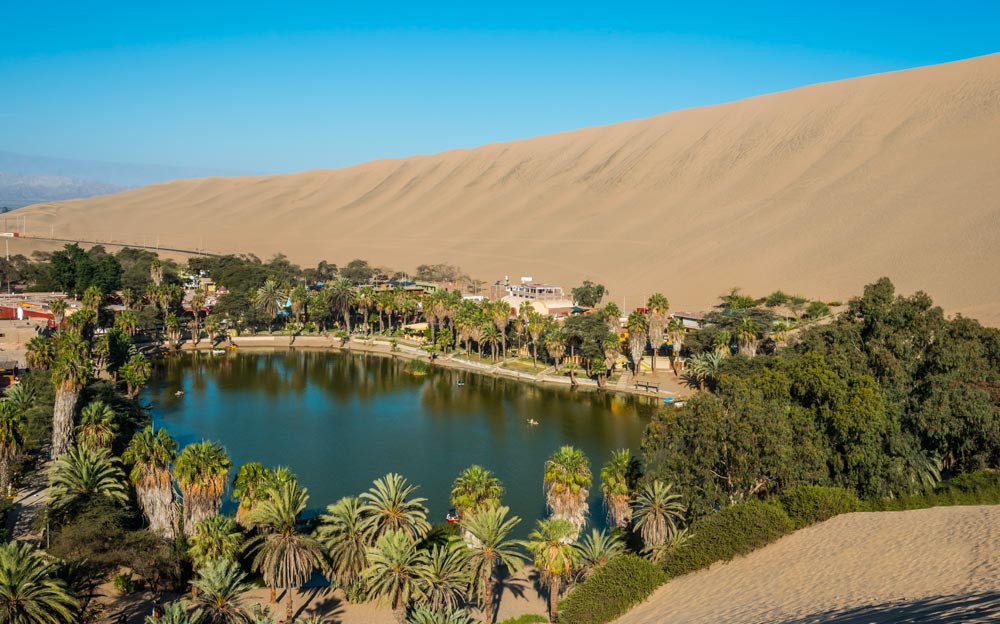
Ica, famed for its year-round sunshine, is 45 mi (73 km) from Paracas, or about an hour’s drive. It rests in a fertile river valley, hugged by dry mountains and towering sand dunes. Visit the region’s premier wineries to relish a variety of wines and Peru’s famed clear brandy, pisco. Several options are available, including both artisanal bodegas and large-scale industrial producers. You will learn about the entire production process, from harvesting through to distillation. At the end of the tour, you will have the chance to enjoy the final product, during a pisco tasting session.
Tambos are storehouses built along famous Inca roads. They served as resting points for important people crossing the Inca Empire. Roughly one hour from Paracas lies Tambo Colorado, which can be visited on a half-day tour. This well-preserved tambo is made of adobe, earning it the name of Pukawasi - red house in Quechua. Constructed in the 15th century, it once served as an administrative control site. Today, most of the site is open to visitors, including the museum, where you can learn more about the tambo’s history.
For many Peruvians, Paracas is the go-to destination for celebrating New Year’s Eve. Figures show that an incredible 60,000 tourists welcomed the New Year in Paracas in 2020. Hotels fill up far in advance and require a stay of 2 or 3 nights minimum. Packages usually include a special celebratory meal, dancing, and, of course, lots of pisco.
Since 2003, on the first Saturday of February, Peruvians all over the country celebrate National Pisco Sour Day. It is especially popular in the southern regions, such as Ica, where pisco is produced. Hotels organize parties with pisco tasting, cocktail making competitions, and much more pisco-related fun.

The town of Paracas, known as El Chaco Beach, rests on the southern shores of Pisco Bay. It is the departure point for Ballestas Islands boat tours and land excursions to the Paracas National Reserve. The town is easy to navigate on foot. In a matter of minutes, walk from your hotel to the coastal boardwalk and nearby restaurants. Use mototaxis to get around the town more quickly. For longer distances, there are also regular taxis available.
For travelers staying at a hotel in Paracas, the Pisco airport is a convenient departure point for a Nazca Lines Flyover Tour. Located in Pisco City, the Pisco airport is only 6 mi (10 km) from the town of Paracas.
To get to the Ballestas Islands, guided speedboat tours leave from the pier in the town of Paracas. The rocky isles are roughly 12 mi (20 km) away.
An overnight stay in Paracas is easily paired with a Nazca Flyover Tour, thanks to its proximity to Lima (3 to 4-hour drive). The selection of luxury hotels in Paracas is also far superior to the accommodation options available in Nazca City. From Lima, take a comfortable bus to Paracas and then continue by car to the Pisco airport. Board a small plane to take you to Nazca, and fly over the amazing geoglyphs. After landing back at Pisco airport, a transfer will take you to your hotel in Paracas. Spend the night in Paracas and continue your guided exploration the following day.
The Paracas National Reserve stretches into remote parts of the desert peninsula and is sparsely populated. To ensure your safety when exploring on your own, make sure to visit during daylight hours and travel in a group.